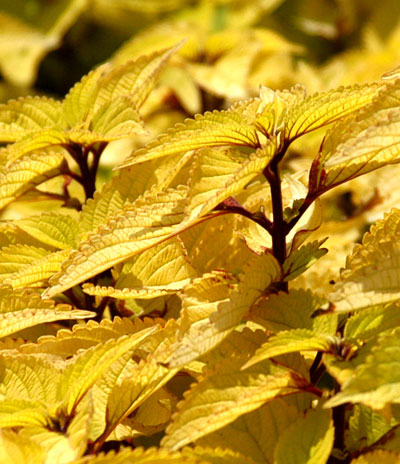Crazy About Coleus

When I was a kid, one of my favorite plants to grow from seed was coleus. All the seeds looked the same. When they germinated, they still looked pretty much alike. But within a week or two the true colors began to show up.

But those old seed types started to produce flower spikes almost immediately, and that broke my heart because nothing ruins a good coleus plant any faster than flowers. They shut the growth down entirely. You pinch them out, but the plants still quit producing new foliage.

So for 40 years we relied on selections that were referred to as “cutting-grown” coleus – chosen for their reluctance to bloom. There were 30 or 40 varieties, but they were sold under a whole host of names.
Then the hybridizers started to work. Coleus were bred not only not to bloom, but also to stand up to a good bit of sun (at least morning sun). So today, when you go into the better retail nurseries in Texas, you’ll find a wonderful assortment of sun-resistant, non-flowering coleus ready to plant into your garden.

Plant coleus into well-prepared garden soil to which you’ve added several inches of organic matter and, for clay soils, 1 inch of expanded shale. Keep them uniformly moist at all times, and feed them with a high-nitrogen, water-soluble plant food every 10 or 15 days all season long. Pinch out their growing tips to keep them compact and well branched.

